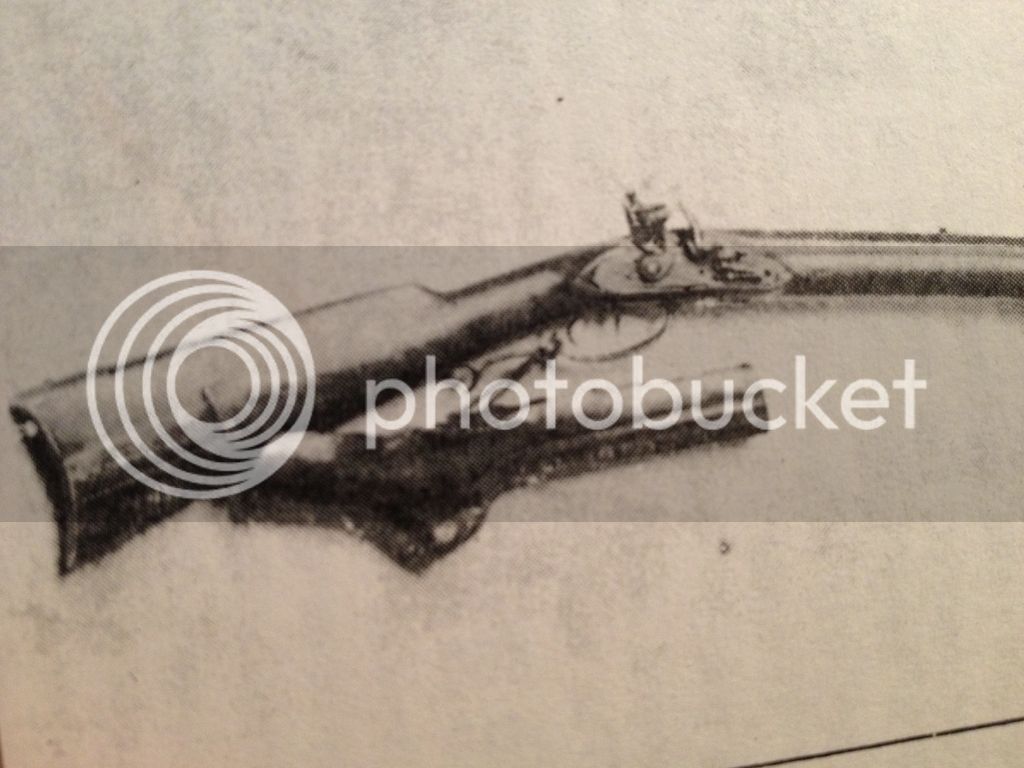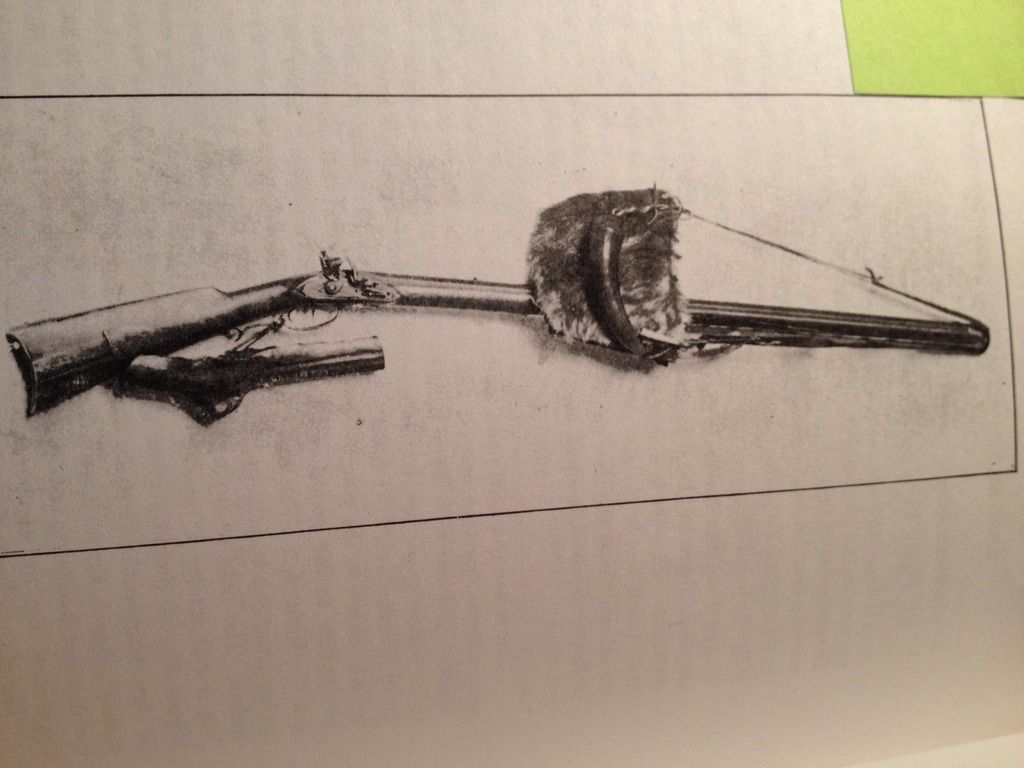- Joined
- Sep 20, 2010
- Messages
- 1,184
- Reaction score
- 1,128
Please post your photos here on this forum


Hi Erv, I can tell you about the Reger Rifle pictured in Border Settlers.Greetings,
So, the photo below shows a rifle that belong to a great (x a few) uncle. I'm transcribing some details from it. I'm trying to track down the actual rifle itself, as it's possible it still exists. It's an ancestral weapon, and would love to find out exactly what type it is. My guess is a 1770s Lancaster, but I am no expert.
I'm actually shopping for a custom rifle and this was quite a find.


From the book in which this was found:
"I am the owner of an old flint-lock rifle, said to be used in this skirmish [1783 or 1784], either by John Reger...or his younger brother Abram [my great uncles]. The rifle is full stocked with hard maple, and has the old fashioned brass tallow box in the side of the stock. On the lid of this box, in large Spencerian capitals are the clear cut letters, "A.D.R." On the barrel, near the breech, in Roman figures and small English capitals, is this inscription:
105 Va Regt Washington
The lettering is plain and legible, though crudely executed. The gun weighs 9 pounds, 14 ounces, and measures full length 56 and 1/4 inches. The barrel is 40 inches. It was, doubtless, originally some two or more inches longer but was subsequently shortened at the breech on account of being 'burned out.' It takes a ball one-half inch in diameter...The rear sight is extremely fine, and formerly was 11 inches from the breech, but has at sometime been set back on the barrel 4 inches. The bead or front sight is silver...It was supposedly the property of an elder brother, Anthony Reger, who was an ensign int he 13th Virginia Regiment, Revolutionary War. The regimental number, if such, on the barrel does not correspond with that of Reger's regiment, but it is not known that he owned it during the war; nor can it at this time be determined that the number is regimental. It may be an enrollment number..."
Then the author states that there was a 10th VA Regt of militia formed in 1799 in Washington County, VA, but asserts that the rifle was in use during the Revolution.
This was found in The Border Settlers of Northwestern Virginia written by Lucullus Virgil McWhorter.
Bit of a mystery, but from an untrained eye it does look to be of a similar design to 1770s rifles.
Any help would be greatly appreciated.
I wonder if the lock was replaced or upgraded, about the same time barrel was set backHi,
It is very hard to see in the photo but the lock looks to have a double throated flint cock similar to those made in England during the late 18th and early 19th centuries. The lock also appears to have a roller on the frizzen spring, a feature not found on any Rev War period firearms unless the lock was replaced at a later date. Again the photos are not clear but I don't believe the gun was made before 1800 unless parts were replaced. The styling around the lock panels also suggests a gun from the 19th century but I really cannot tell from the photos. Certainly, the patch box is an old style similar to those used on some Rev War period guns. It looks like it was meant to have side panels.
dave
We really do not know the details. The rifle would have to be examined in hand or at least have good photographs that are not 100 years old from a moldy book, or from last week 20 feet away.I wonder if the lock was replaced or upgraded, about the same time barrel was set back
Now a second question, how do you set back a swamped barrel? Did they have straight barrels in revolution?
Enter your email address to join: